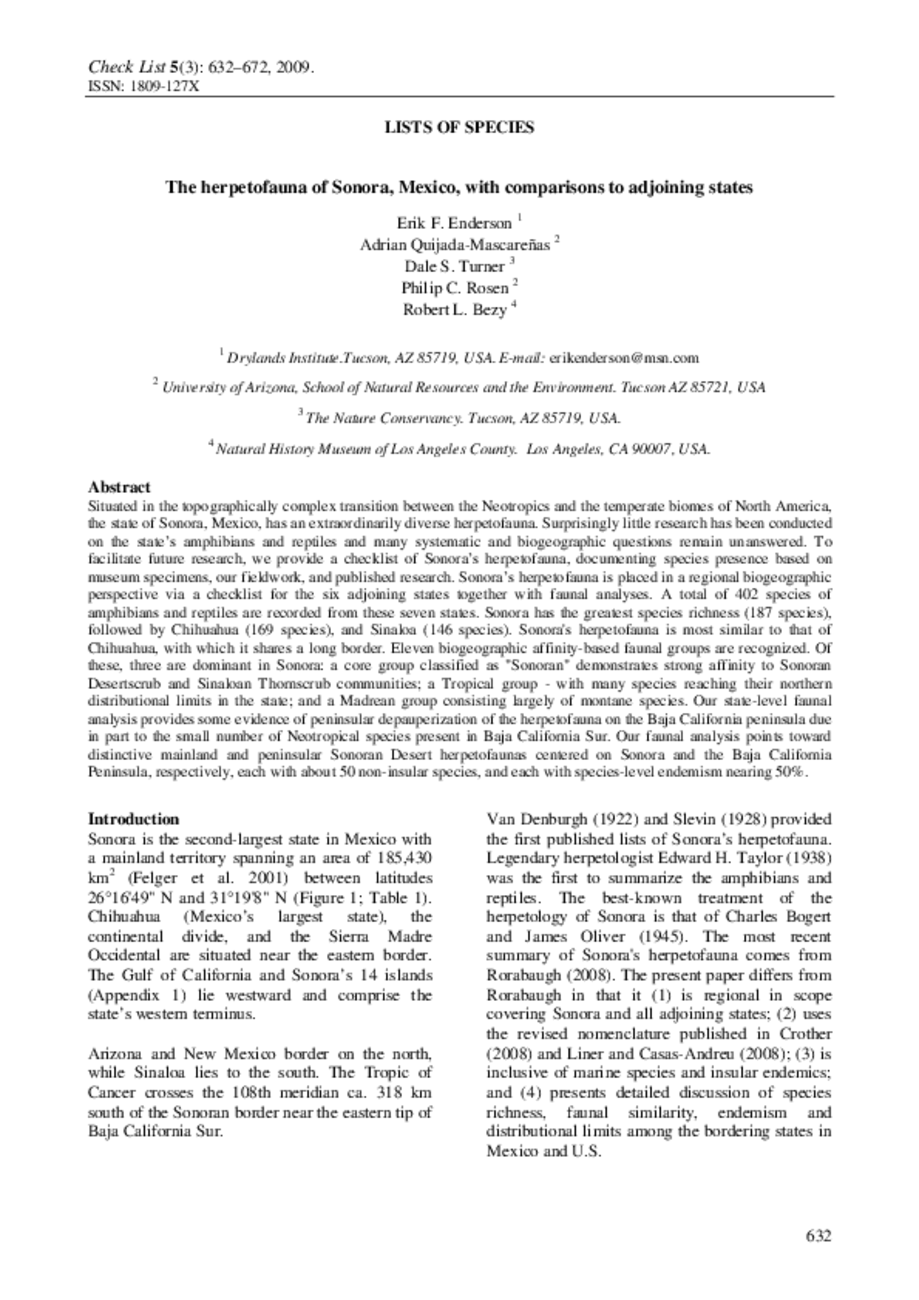The herpetofauna of Sonora, Mexico, with comparisons to adjoining states
Situated in the topographically complex transition between the Neotropics and the temperate biomes of North America, the state of Sonora, Mexico, has an extraordinarily diverse herpetofauna. Surprisingly little research has been conducted on the state’s amphibians and reptiles and many systematic and biogeographic questions remain unanswered. To facilitate future research, we provide a checklist of Sonora’s herpetofauna, documenting species presence based on museum specimens, our fieldwork, and published research. Sonora’s herpetofauna is placed in a regional biogeographic perspective via a checklist for the six adjoining states together with faunal analyses. A total of 402 species of amphibians and reptiles are recorded from these seven states. Sonora has the greatest species richness (187 species), followed by Chihuahua (169 species), and Sinaloa (146 species). Sonora's herpetofauna is most similar to that of Chihuahua, with which it shares a long border. Eleven biogeographic affinity-based faunal groups are recognized. Of these, three are dominant in Sonora: a core group classified as "Sonoran" demonstrates strong affinity to Sonoran Desertscrub and Sinaloan Thornscrub communities; a Tropical group - with many species reaching their northern distributional limits in the state; and a Madrean group consisting largely of montane species. Our state-level faunal analysis provides some evidence of peninsular depauperization of the herpetofauna on the Baja California peninsula due in part to the small number of Neotropical species present in Baja California Sur. Our faunal analysis points toward distinctive mainland and peninsular Sonoran Desert herpetofaunas centered on Sonora and the Baja California Peninsula, respectively, each with about 50 non-insular species, and each with species-level endemism nearing 50%.

